- Tips for Growing Dicentra from Seed
- 1. Start seeds indoors
- 2. Prepare the soil
- 3. Sow the seeds
- 4. Provide proper lighting
- 5. Maintain consistent moisture
- 6. Transplant outdoors
- 7. Provide support
- 8. Monitor for pests and diseases
- 9. Deadhead and trim
- 10. Mulch and protect in winter
- Choose the Right Location
- Prepare the Soil
- Sow the Seeds
- Provide Adequate Watering
- Provide Proper Sunlight
- Thin out Seedlings
- Protect from Pests and Diseases
- 1. Aphid Control
- 2. Slug and Snail Protection
- 3. Powdery Mildew Prevention
- 4. Crown and Root Rot Control
- Transplanting and Maintenance
- Questions and Answers:
- How to grow Dicentra from seed?
- What are the popular types and varieties of Dicentra?
- Can Dicentra be grown in containers?
- Can Dicentra be propagated from cuttings?
- Videos: How to Plant Dicentra: Spring/Summer Guide
Dicentra, commonly known as bleeding heart, is a beautiful and delicate flower that can add a touch of elegance to any garden. With its unique heart-shaped flowers and graceful foliage, this plant is a favorite among gardeners around the world. One of the best ways to introduce dicentra into your garden is by starting from seed. In this article, we will share some useful tips for growing dicentra from seed, as well as highlight some popular types and varieties.
When it comes to growing dicentra from seed, there are a few important things to keep in mind. First, dicentra seeds have a hard outer coat, which means they require a period of cold stratification in order to germinate. This can be achieved by placing the seeds in a damp paper towel and refrigerating them for 6-8 weeks. Once the stratification period is complete, you can sow the seeds in a seed tray or pot filled with moist and well-draining soil.
It’s important to note that dicentra seeds are very small, so it’s recommended to sow them on the surface of the soil and lightly cover them with a thin layer of vermiculite or fine sand. Keep the soil consistently moist, but not overly wet, and provide the seeds with a warm and bright location, such as a sunny window or a greenhouse. Germination can take anywhere from 2-4 weeks, so be patient and don’t give up.
Once the dicentra seedlings have emerged, it’s important to provide them with proper care to ensure they thrive. Keep the soil evenly moist and provide the seedlings with sufficient light. As they grow, you can gradually acclimate them to outdoor conditions by placing them in a sheltered location for a few hours each day. After a couple of weeks, they should be ready for planting in your garden.
There are several popular types and varieties of dicentra to choose from, each with its own unique charm. The most common type is Dicentra spectabilis, which features arching stems of heart-shaped flowers in shades of pink or white. Another popular variety is Dicentra eximia, which has fern-like foliage and delicate pink flowers that bloom from late spring to early summer. Dicentra formosa, also known as Pacific bleeding heart, is a native species that thrives in shady woodland areas and produces clusters of deep pink flowers.
In conclusion, dicentra is a stunning flower that can bring beauty and charm to any garden. By growing dicentra from seed, you can have the satisfaction of watching these delicate plants emerge and flourish. Remember to provide the seeds with the appropriate cold stratification period and care for the seedlings as they grow. With its unique heart-shaped flowers and a variety of types and varieties to choose from, dicentra is sure to make a statement in your garden.
Tips for Growing Dicentra from Seed
Growing Dicentra from seed can be a rewarding and enjoyable experience. Here are some tips to help you successfully grow Dicentra from seed:
1. Start seeds indoors
It is recommended to start Dicentra seeds indoors, 8-10 weeks before the last frost date in your area. This will give the plants enough time to establish before being transplanted outdoors.
2. Prepare the soil
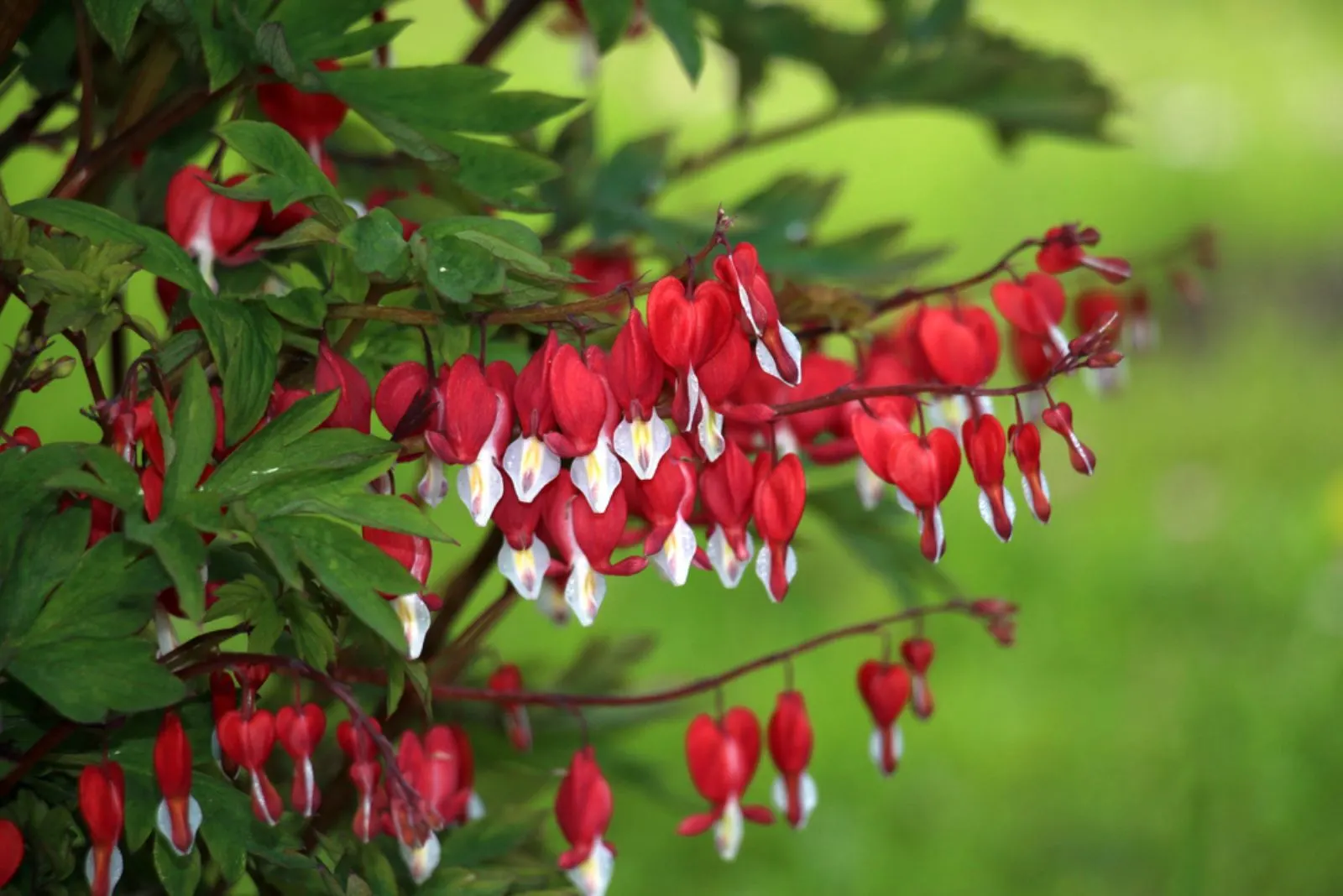
Dicentra prefers moist, well-drained soil. Prepare the soil by loosening it and removing any weeds or debris. Adding organic matter, such as compost, can help improve the soil’s fertility and water retention.
3. Sow the seeds
Sow Dicentra seeds on the soil surface and lightly press them into the soil. Keep the seeds moist but not waterlogged during the germination period.
4. Provide proper lighting
Dicentra requires partial shade to full shade. If growing indoors, place the seedlings near a window with indirect sunlight or use grow lights to provide adequate lighting.
5. Maintain consistent moisture
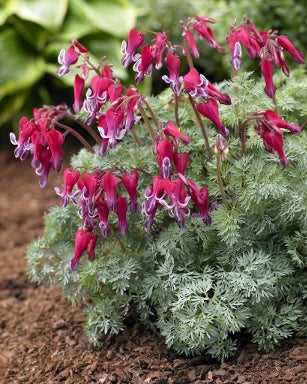
Water the seedlings regularly, keeping the soil evenly moist. Avoid overwatering, as this can lead to root rot. Mulching around the plants can help retain moisture and prevent weeds.
6. Transplant outdoors
Once the danger of frost has passed and the seedlings have developed a strong root system, transplant them outdoors. Space the plants according to the specific variety’s recommended spacing guidelines.
7. Provide support
Some Dicentra varieties, such as Dicentra spectabilis, have delicate stems that may require support. Use stakes or plant supports to prevent the stems from bending or breaking.
8. Monitor for pests and diseases
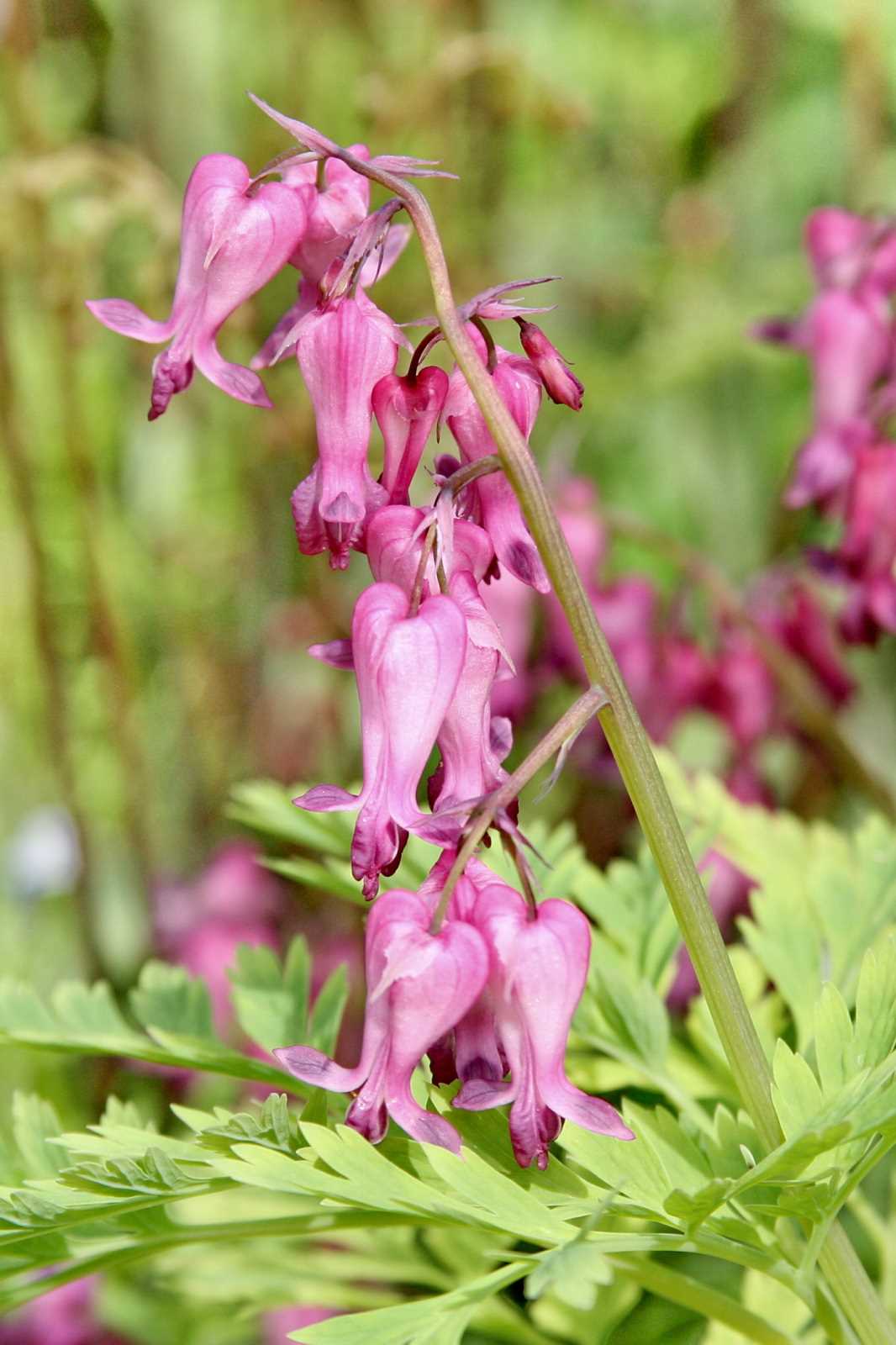
Keep an eye out for common pests, such as slugs or aphids, and promptly address any issues. Proper spacing, good air circulation, and removing any infected or dead foliage can help prevent diseases.
9. Deadhead and trim
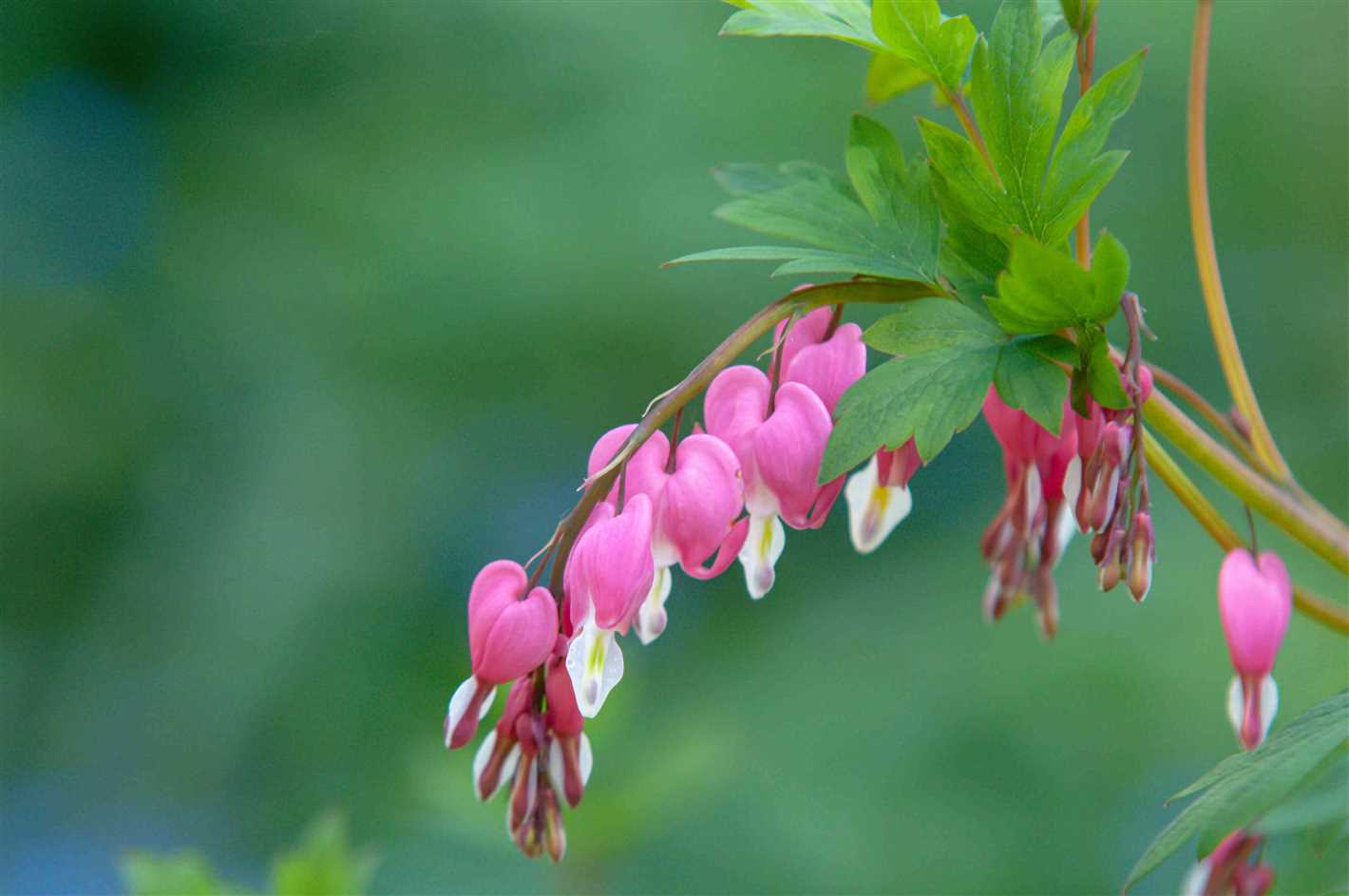
Regular deadheading, removing faded blooms, can encourage continuous blooming. Trimming back the foliage after flowering can help maintain a tidy appearance and promote new growth.
10. Mulch and protect in winter
In colder climates, provide a layer of mulch around the plants in late fall to help protect the root system during winter months. This can also help conserve moisture and suppress weed growth.
By following these tips, you can successfully grow Dicentra from seed and enjoy their beautiful blooms in your garden.
Choose the Right Location
When it comes to growing dicentra from seed, choosing the right location is key to success. Dicentra plants prefer a location that offers partial to full shade. Too much direct sunlight can cause their delicate foliage to scorch.
In addition to shade, dicentra plants need a well-draining soil. Avoid areas that are prone to waterlogging or have heavy clay soil. If the soil is heavy and compacted, consider amending it with organic matter like compost or peat moss to improve its drainage.
Another important factor to consider when choosing a location for dicentra plants is the average temperature. These plants do best in regions with cool summers and mild winters. They are not tolerant of extreme heat or cold. If you live in a region with hot summers or harsh winters, you may need to provide some extra protection or choose a different plant for your garden.
It’s worth noting that dicentra plants also prefer a slightly acidic soil with a pH between 6.0 and 7.0. If your soil is highly alkaline, you can lower its pH by adding sulfur or organic matter.
Lastly, keep in mind that dicentra plants have delicate roots, so it’s important to choose a location where they won’t be disturbed. Avoid planting them near trees or shrubs with aggressive root systems that could compete for nutrients or damage the dicentra’s roots.
By considering these factors and choosing the right location, you can create an ideal growing environment for dicentra plants and enjoy their beautiful blooms for years to come.
Prepare the Soil
Proper soil preparation is essential for the successful growth of Dicentra plants. Here are some steps to help you prepare the soil:
- Choose the right location: Dicentra prefers partial shade to full shade. Select a location that provides the right amount of sunlight for your specific variety.
- Test the soil: Use a soil testing kit to determine the pH level of your soil. Dicentra prefers slightly acidic to neutral soil with a pH range of 5.5 to 7.0.
- Amend the soil: If the pH level of your soil is outside the preferred range, you can amend it using organic matter such as compost or peat moss. This will help adjust the pH and improve the soil structure.
- Remove any weeds and debris: Clear the area of any weeds, rocks, or debris that may hinder the growth of your Dicentra plants.
- Loosen the soil: Use a garden fork or a tiller to loosen the soil. This will improve drainage and allow the roots of the Dicentra plants to penetrate the soil more easily.
- Add organic matter: Incorporate organic matter, such as compost or well-rotted manure, into the soil. This will enrich the soil with nutrients and improve its overall fertility.
- Level the soil: Use a rake to level the soil and create a smooth surface for planting.
By following these steps and preparing the soil properly, you will create optimal growing conditions for your Dicentra plants. This will help ensure their health and vigor, as well as maximize their blooming potential.
Sow the Seeds
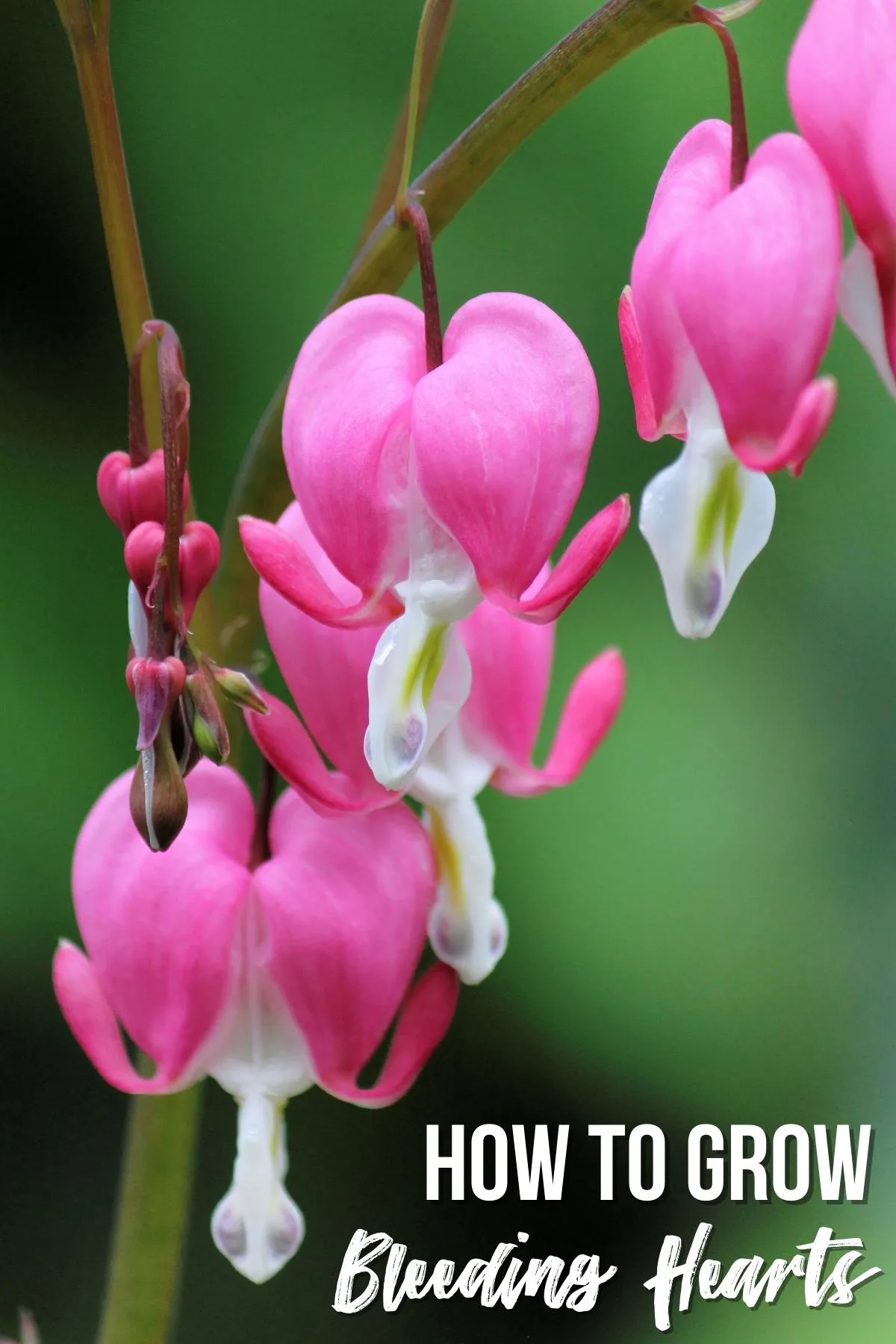
When it comes to sowing Dicentra seeds, there are a few key things to keep in mind:
- Timing: It is best to sow Dicentra seeds in the late summer or early fall. This allows the seeds to experience a period of cold stratification, which can help improve germination rates.
- Preparation: Before sowing the seeds, it is important to prepare the soil properly. Dicentra prefers well-draining soil that is rich in organic matter. It is also a good idea to amend the soil with compost or well-rotted manure to improve its fertility.
- Sowing method: Dicentra seeds are tiny and should be sown on the surface of the soil. You can gently press them into the soil using the back of a spoon, but avoid burying them too deeply.
- Watering: After sowing the seeds, give them a thorough watering. Be sure to keep the soil evenly moist throughout the germination period.
It is important to keep in mind that Dicentra seeds can be slow to germinate. They may take anywhere from a few weeks to a few months to sprout. Patience is key when growing Dicentra from seed.
Once the seedlings have emerged, it is a good idea to thin them out, if necessary, to allow for proper spacing. This will help prevent overcrowding and promote healthier growth.
Overall, growing Dicentra from seed can be a rewarding experience. With the right care and patience, you can enjoy the beauty of these delicate, heart-shaped flowers in your garden.
Provide Adequate Watering
Proper watering is essential for the successful growth of Dicentra plants from seed. These plants prefer consistent moisture but cannot tolerate waterlogged soil. Follow the recommendations below to provide adequate watering for your Dicentra seeds:
- Water the soil before sowing the Dicentra seeds. This will ensure that the seeds have a moist environment to germinate in.
- After sowing the seeds, water the soil gently to avoid displacing them. Use a fine mist or a watering can with a narrow spout.
- Check the moisture level in the soil regularly. Dicentra plants require moist but well-draining soil. If the top inch of soil feels dry, it’s time to water.
- Water the Dicentra plants deeply once a week during dry periods. This will encourage the growth of deep roots and make the plants more drought-tolerant.
- Avoid overwatering the Dicentra plants, as this can lead to root rot and other diseases. Make sure the soil has good drainage to prevent waterlogging.
- During hot summer months, Dicentra plants may benefit from some light shade or mulching to help retain moisture in the soil.
By providing consistent, adequate watering, you can ensure healthy growth and blooming of your Dicentra plants from seed.
Provide Proper Sunlight
When growing Dicentra from seed, it is important to provide the plants with proper sunlight. Most varieties of Dicentra prefer partial shade to full shade, although there are a few varieties that can tolerate more sun.
To ensure that your Dicentra plants receive the right amount of sunlight, it is important to choose the proper location. Look for an area in your garden that receives dappled or filtered sunlight throughout the day. If you live in a hot climate, it is especially important to provide your Dicentra plants with some shade during the hottest part of the day to prevent them from wilting or burning.
If you are growing Dicentra indoors, place the seedlings in a location that receives bright, indirect sunlight. A south-facing window or a location under grow lights can work well. Avoid placing the seedlings in direct sunlight, as this can cause the leaves to become scorched.
Proper sunlight is crucial for the overall health and growth of your Dicentra plants. By ensuring that they receive the right amount of light, you can help them thrive and produce beautiful blooms. So remember to provide partial shade to full shade for most varieties, and consider the sunlight needs of your specific Dicentra variety.
Thin out Seedlings
Once your dicentra seedlings have grown a few inches tall, it’s time to thin them out. This process involves removing any excess seedlings to give the remaining plants more room to grow and develop.
Here are some tips for thinning out your dicentra seedlings:
Choose the strongest seedlings: Look for seedlings that are the healthiest and have the most vigorous growth. These will have the best chance of thriving once thinned out.
Space them evenly: Remove the excess seedlings, leaving enough space for the remaining plants to grow without overcrowding. Aim for a spacing of about 6-12 inches between each seedling, depending on the specific dicentra variety.
Avoid damaging the roots: When thinning out the seedlings, be careful not to disturb the roots of the remaining plants. Gently pull out the excess seedlings, taking care not to disturb the soil too much.
Dispose of excess seedlings: Once you have thinned out your dicentra seedlings, you can either transplant the excess seedlings to another area of your garden or dispose of them. Just be sure to handle them carefully to avoid damaging the remaining plants.
Water the remaining seedlings: After thinning out the seedlings, give the remaining plants a thorough watering to help them recover from the thinning process and encourage new growth.
Thinning out your dicentra seedlings will help ensure that your plants have enough space to grow and reach their full potential. It will also help prevent overcrowding, which can lead to poor growth and increased risk of disease. Follow these tips to thin out your dicentra seedlings and enjoy healthy, beautiful plants in your garden.
Protect from Pests and Diseases
While dicentra plants are generally hardy and resistant to many pests and diseases, it is still important to take precautions to protect them and ensure their health. Here are some tips to keep your dicentra plants safe from common pests and diseases:
1. Aphid Control
Aphids can be a common problem for dicentra plants. These small, soft-bodied insects feed on the sap of the plants and can cause wilting, yellowing leaves, and stunted growth. To control aphids, regularly inspect your plants for infestations and use a strong stream of water to wash them off the leaves. You can also use insecticidal soap or neem oil spray as a natural and safe alternative.
2. Slug and Snail Protection
Slugs and snails are also known to feed on dicentra plants, especially their tender young shoots. To protect your plants from these pests, remove any debris or hiding places near the plants, such as fallen leaves or weeds. You can also create barriers using copper tape or apply diatomaceous earth around the base of the plants to deter slugs and snails. Additionally, handpicking them off the plants and using organic slug pellets can also help control their population.
3. Powdery Mildew Prevention
Powdery mildew is a common fungal disease that can affect dicentra plants, causing a white powdery coating on the leaves and stems. To prevent powdery mildew, ensure proper air circulation around the plants by spacing them appropriately and removing any overcrowded foliage. Water the plants at the base and avoid wetting the leaves, as moisture on the leaves can promote the growth of powdery mildew. Applying a fungicidal spray specifically formulated for powdery mildew can also help prevent the disease.
4. Crown and Root Rot Control
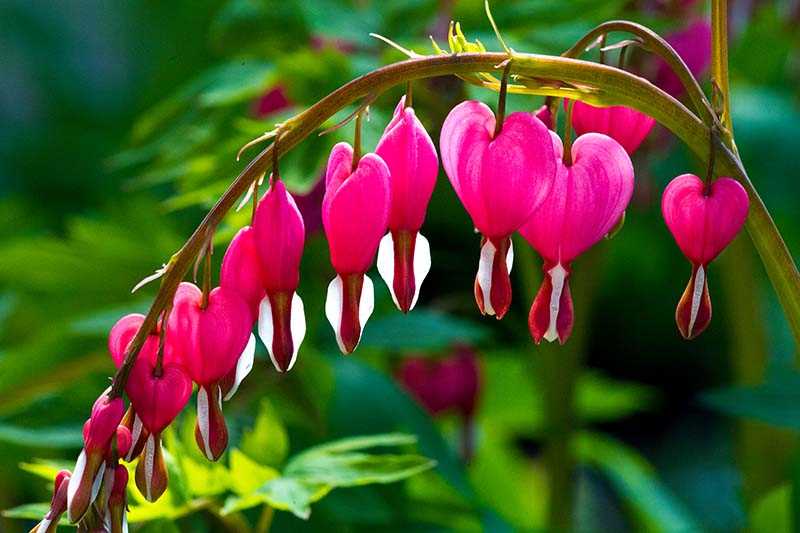
Crown and root rot can occur in dicentra plants if the soil is too wet and poorly drained. To prevent rot, ensure the plants are planted in well-draining soil and avoid overwatering. It is better to underwater than to overwater dicentra plants. Applying a layer of mulch around the base of the plants can also help regulate soil moisture and prevent rot.
By following these tips and regularly monitoring your dicentra plants, you can protect them from pests and diseases and ensure their healthy growth and development.
Transplanting and Maintenance
Once your dicentra seedlings have reached a height of around 2 inches (5 cm) and have developed a few sets of true leaves, they can be transplanted into their permanent location in the garden. Prepare the soil by loosening it and adding organic matter, such as compost, to improve drainage and fertility.
Choose a location that receives partial shade and has moist, well-draining soil. Dicentra prefers soil that is consistently moist but not waterlogged. Dig a hole that is slightly larger than the root ball of the seedling and gently place it into the hole, making sure the top of the root ball is level with the soil surface.
After transplanting, water the seedlings thoroughly to help them establish their root systems. Apply a layer of organic mulch, such as shredded bark or straw, around the plants to help conserve moisture and suppress weeds.
As dicentra plants grow, they may require staking or support, especially if they are the taller varieties. Use bamboo stakes or other supports to prevent the plants from bending or breaking in strong winds or heavy rain.
Regular maintenance of dicentra plants includes keeping the soil consistently moist, especially during dry spells. Water deeply but infrequently to encourage deep root growth. Avoid wetting the foliage, as this can lead to disease or pest problems.
In terms of fertilization, dicentra plants don’t require heavy feedings. Apply a balanced, slow-release fertilizer in early spring and again in mid-summer. Avoid over-fertilizing, as this can lead to excessive foliage growth at the expense of flowers.
Deadheading spent flowers will encourage continuous blooming throughout the growing season. Simply remove the faded flowers by cutting the stem back to a set of leaves or just above a lateral bud.
Monitor your dicentra plants regularly for signs of pests or diseases. Common issues include aphids, slugs, and powdery mildew. If you notice any problems, take appropriate measures, such as hand-picking pests or applying organic insecticides or fungicides.
In colder climates, it’s important to provide winter protection for dicentra plants. Apply a layer of mulch or straw around the base of the plants in late fall to help insulate the roots and protect them from freezing temperatures.
With proper transplanting and maintenance, your dicentra plants should thrive and reward you with their delicate, heart-shaped flowers year after year.
Questions and Answers:
How to grow Dicentra from seed?
To grow Dicentra from seed, start by preparing a seed tray or pots with a well-draining potting mix. Scatter the seeds over the top of the soil and lightly press them in. Water gently and keep the soil moist but not waterlogged. Place the tray or pots in a warm location with indirect sunlight. The seeds will germinate in 2-4 weeks. Once the seedlings are large enough to handle, thin them out and transplant them into individual pots. Grow the plants indoors until they are large enough to be planted outdoors in a well-draining garden bed.
What are the popular types and varieties of Dicentra?
Some popular types and varieties of Dicentra include Dicentra spectabilis (commonly known as Bleeding Heart), Dicentra eximia (Fringed Bleeding Heart), Dicentra formosa (Pacific Bleeding Heart), and Dicentra cucullaria (Dutchman’s Breeches). These varieties vary in terms of flower color, size, and growing habits. Each variety has its own unique charm and can add beauty to any garden.
Can Dicentra be grown in containers?
Yes, Dicentra can be grown in containers. Choose a container with good drainage and fill it with a well-draining potting mix. Plant the Dicentra seedlings or small plants in the container and water thoroughly. Place the container in a location with partial shade and protect it from hot afternoon sun. Ensure that the soil remains moist but not waterlogged. Dicentra in containers may require more frequent watering compared to those planted in the ground. Enjoy the beauty of Dicentra in your container garden!
Can Dicentra be propagated from cuttings?
Dicentra can be propagated from cuttings, but it can be a bit challenging. To propagate Dicentra from cuttings, take 3-4 inch stem cuttings from healthy, mature plants in late spring or early summer. Remove the lower leaves from the cuttings and dip the cut ends in a rooting hormone powder or gel. Plant the cuttings in a well-draining potting mix and keep them in a warm, humid location with indirect sunlight. Mist the cuttings regularly to keep them moist and encourage rooting. It may take several weeks for the cuttings to root. Once they have rooted, transplant them into individual pots and grow them until they are large enough to be planted outdoors.







